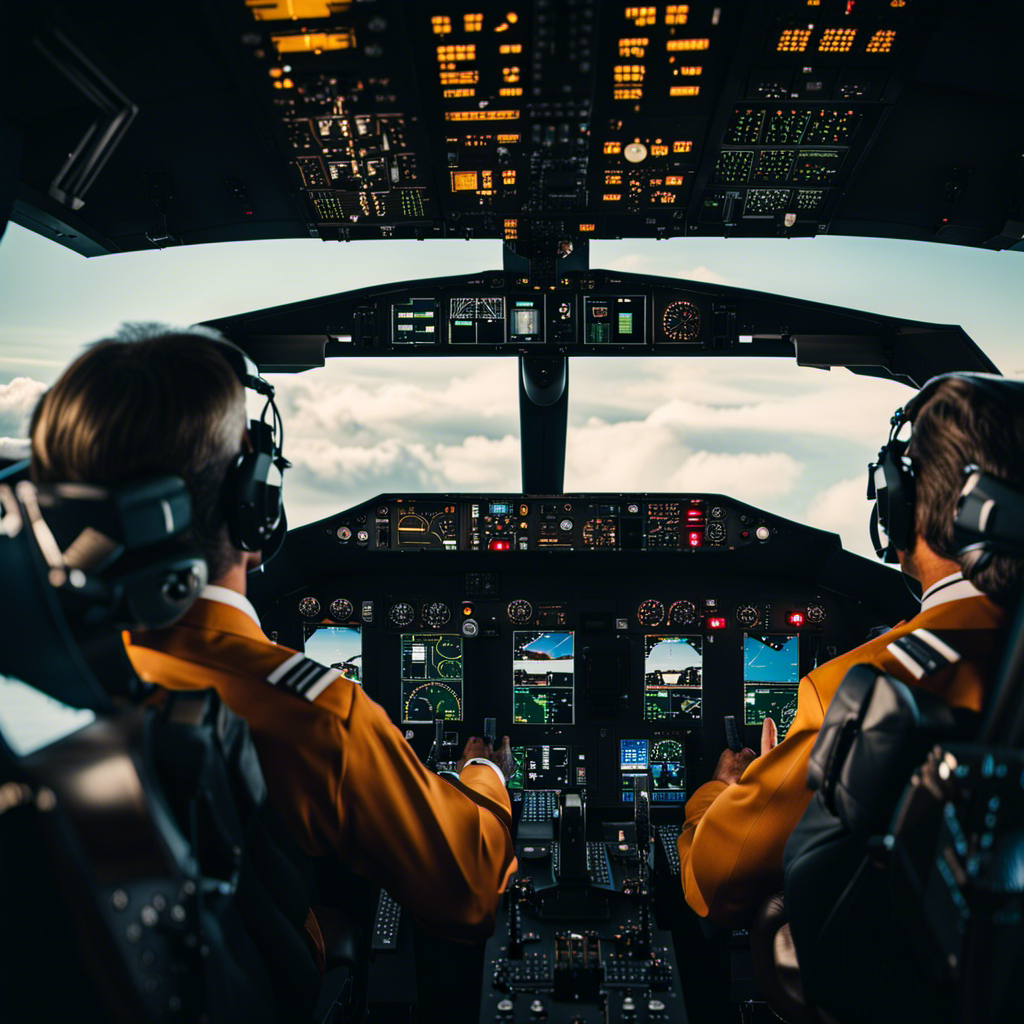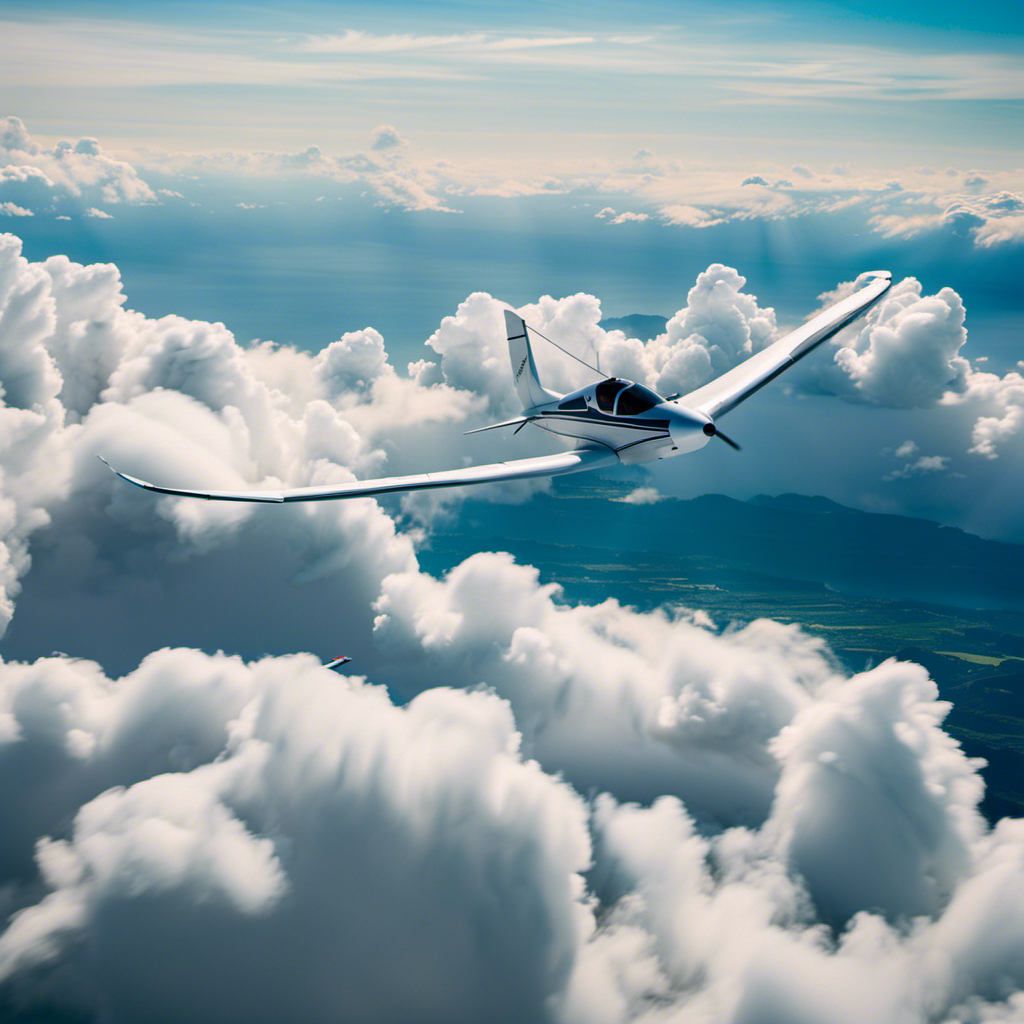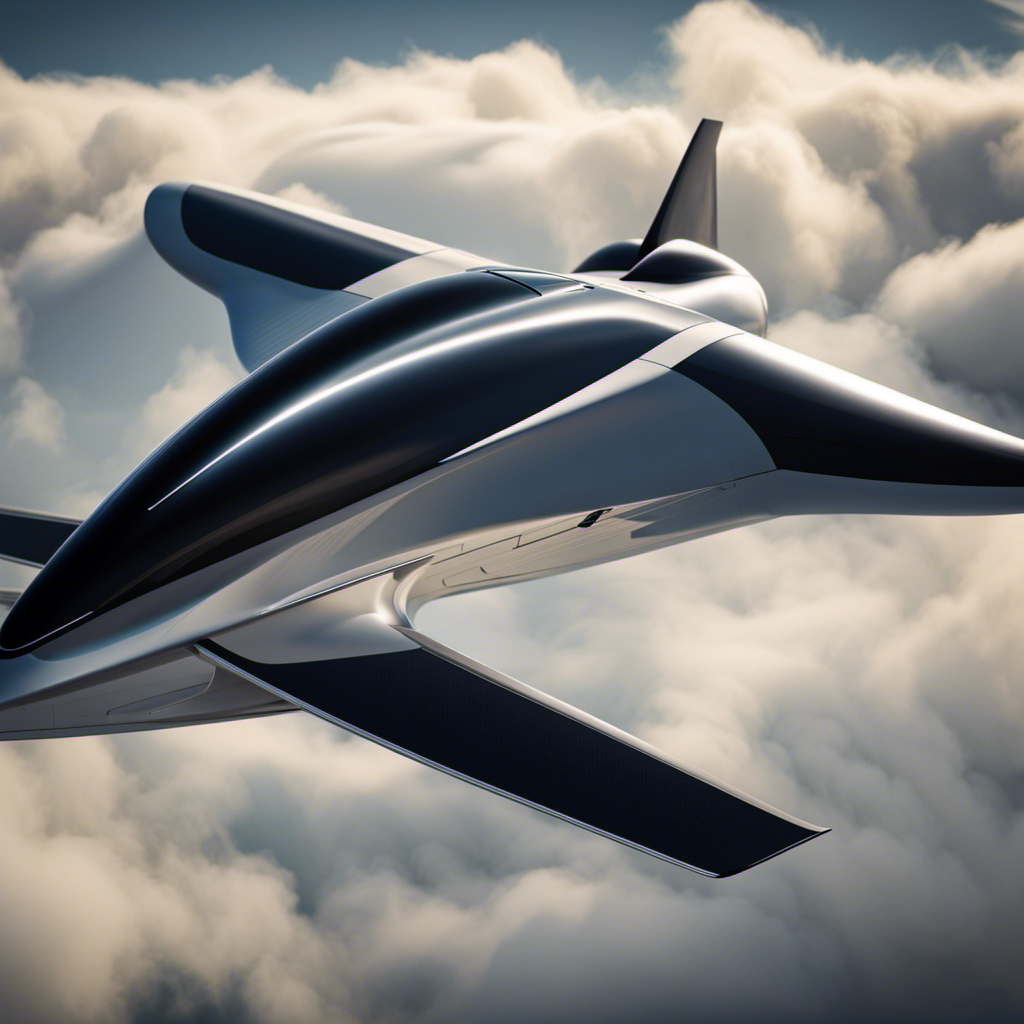Do you know what guarantees your safety while flying in the air?
It’s the 2 pilot cockpit rule, a crucial regulation that ensures your aviation safety.
In this article, we’ll delve into the history, rationale, and impact of this rule, as well as the training and certification requirements for pilots.
We’ll also explore potential changes and expert opinions on this rule.
So buckle up and get ready to discover how the 2 pilot cockpit rule guarantees safe and secure air travel for all.
Key Takeaways
- The two-pilot cockpit rule refers to the requirement for two pilots to be present in the cockpit during commercial flights.
- The rule is part of the training and certification requirements for pilots, which include theoretical training, hands-on flying experience, written exams, and practical exams.
- There is ongoing debate and potential changes to the two-pilot cockpit rule, considering advancements in automation and remote monitoring systems.
- The debate also involves discussing the possibility of a single-pilot cockpit versus a two-pilot cockpit configuration.
The Importance of Aviation Safety
Aviation safety is crucial for ensuring the well-being of passengers and crew members. When you step onto an airplane, you trust that every measure has been taken to keep you safe throughout your journey.
From the moment you board, airlines and regulatory bodies work tirelessly to uphold the highest standards of safety. Pilots undergo extensive training to handle various situations, and strict regulations are in place to govern everything from maintenance procedures to emergency protocols.
The aviation industry constantly evolves to adapt to new technologies and challenges, ensuring that safety remains a top priority. Understanding the history and evolution of cockpit regulations allows us to appreciate the continuous efforts to enhance aviation safety.
The History and Evolution of Cockpit Regulations
You might be interested to learn about the background and development of regulations regarding the arrangement and safety protocols within the two-person setup in the cockpit. Over time, aviation authorities recognized the importance of having two pilots in the cockpit to enhance safety and operational efficiency. The regulations governing this setup have evolved to address various concerns and improve overall cockpit performance. Here is an overview of the key milestones in the history of cockpit regulations:
| Time Period | Regulation | Purpose |
|---|---|---|
| Early 1900s | No specific regulations | Limited aircraft technology and experience |
| 1950s-1960s | Introduction of cockpit crew concept | Improved communication and workload sharing |
| 1970s-1980s | Mandatory two-pilot rule | Enhanced safety and decision-making |
| 2000s-present | Advanced training and qualification standards | Continued improvement of cockpit performance |
Understanding the historical development of cockpit regulations provides insight into the rationale behind the two-pilot cockpit rule, which will be explored in the next section.
The Rationale Behind the 2 Pilot Cockpit Rule
To ensure the safety and security of flights, it is crucial to prevent unauthorized access to the cockpit. By implementing the 2-pilot cockpit rule, airlines aim to minimize the risk of potential threats from individuals trying to gain control of the aircraft.
Additionally, this rule also serves to enhance pilot alertness and decision-making. It allows for effective communication and collaboration between the pilots.
Preventing Unauthorized Access to the Cockpit
Make sure you’re aware of the 2 pilot cockpit rule to prevent unauthorized access. This rule requires that there are always two authorized pilots in the cockpit at all times during a flight.
Here are three key reasons why this rule is in place:
-
Security: By having two pilots in the cockpit, it reduces the risk of unauthorized individuals gaining access to the controls of the aircraft. This is particularly important in light of past incidents where unauthorized individuals have attempted to take control of the plane.
-
Emergency Situations: In the event of a medical emergency or incapacitation of one pilot, having another pilot in the cockpit ensures that there is someone capable of flying and landing the aircraft safely.
-
Accountability: The 2 pilot cockpit rule provides a system of checks and balances, ensuring that both pilots are present and actively engaged in monitoring and operating the aircraft.
Enhancing Pilot Alertness and Decision-making
Enhancing pilot alertness and decision-making is crucial for maintaining the safety and efficiency of flights. In order to achieve this, airlines have implemented various strategies and technologies.
One important aspect is providing adequate rest and reducing fatigue. Airlines have established regulations to ensure pilots receive sufficient rest periods between flights. Additionally, training programs focus on improving situational awareness and decision-making skills. Pilots are taught to effectively analyze information, prioritize tasks, and make sound judgments in high-pressure situations.
Furthermore, advancements in technology have provided pilots with tools to enhance their alertness and decision-making. For instance, the use of automation systems and advanced avionics can assist pilots in managing complex tasks and reducing workload.
International Adoption of the 2 Pilot Cockpit Rule
The international adoption of the 2 pilot cockpit rule has been widely implemented for increased aviation safety. This rule requires that there be two qualified pilots in the cockpit at all times during flight.
By having two pilots present, there is an added layer of safety and redundancy in case one pilot becomes incapacitated or unable to perform their duties. This rule is based on the understanding that having two sets of eyes and two minds focused on the task at hand can help to prevent accidents and improve decision-making in critical situations.
The 2 pilot cockpit rule is now a standard practice in the aviation industry and has been shown to significantly enhance aviation safety.
Impact of the 2 Pilot Cockpit Rule on Aviation Safety
Now that you understand the international adoption of the 2 pilot cockpit rule, let’s delve into its impact on aviation safety.
This rule has been implemented by many countries to enhance the security of commercial flights. By requiring two pilots in the cockpit at all times, it aims to prevent unauthorized access and reduce the risk of pilot incapacitation incidents.
Having two qualified individuals in the cockpit allows for better communication, coordination, and decision-making, which are crucial elements of safe flight operations. Additionally, it provides a backup in case one pilot becomes incapacitated or unable to perform their duties.
Overall, the 2 pilot cockpit rule has significantly contributed to improving aviation safety standards worldwide. However, despite its benefits, there are still some challenges and controversies surrounding the rule that need to be explored.
Current Challenges and Controversies Surrounding the Rule
In this discussion, you will explore two key points related to the current challenges and controversies surrounding the 2 Pilot Cockpit Rule.
First, you will examine the issue of pilot shortage and its impact on aviation safety. This will involve understanding the causes of the shortage and how it affects the availability of qualified pilots.
Second, you will delve into the concept of Crew Resource Management (CRM) and its importance in ensuring effective communication and coordination among flight crew members.
Additionally, you will analyze potential security risks associated with the rule and explore mitigation measures that can be implemented to address these risks.
Pilot Shortage and Crew Resource Management
There’s a significant pilot shortage, which has led to increased emphasis on crew resource management. This approach aims to optimize the use of available resources, such as pilots, to enhance safety and efficiency in aviation operations.
Here are three key aspects related to the pilot shortage and crew resource management:
-
Recruitment and Retention Efforts: Airlines and aviation organizations are implementing various strategies to attract and retain pilots, including offering competitive salaries, signing bonuses, and improved working conditions.
-
Training and Development Programs: To address the shortage, there is a focus on developing comprehensive training programs that provide aspiring pilots with the necessary skills and qualifications. This includes partnerships between airlines and flight schools to streamline the path to becoming a pilot.
-
Automation and Technology Integration: The aviation industry is exploring the use of advanced automation and technology to optimize cockpit operations and reduce the reliance on human resources. This includes the integration of artificial intelligence and enhanced flight management systems.
As the industry adapts to the pilot shortage, it is crucial to also consider potential security risks and mitigation measures.
Potential Security Risks and Mitigation Measures
To address potential security risks, airlines are implementing enhanced screening procedures and promoting increased awareness among cabin crew and passengers. These measures aim to ensure the safety of everyone on board and prevent any potential threats.
By implementing stricter screening procedures, airlines can identify and mitigate potential security risks before they escalate. Additionally, promoting increased awareness among cabin crew and passengers allows for a more vigilant and proactive approach to security. It is crucial for everyone to remain vigilant and report any suspicious activities or individuals to the cabin crew or authorities immediately.
By working together, we can create a safer environment for everyone on board. This focus on security is just one aspect of ensuring the safety of air travel.
Another important aspect is the training and certification requirements for pilots, which we will discuss in the next section.
Training and Certification Requirements for Pilots
Are you aware of the training and certification requirements for pilots? It’s important to understand the rigorous process that pilots go through to ensure the safety of air travel. Here are four key aspects of pilot training and certification:
-
Ground School: Pilots must complete extensive theoretical training covering topics such as aerodynamics, aircraft systems, meteorology, and navigation.
-
Flight Training: Hands-on flying experience is crucial, with pilots needing to accumulate a certain number of flight hours under various conditions and scenarios.
-
Written Exams: Pilots must pass multiple written exams to demonstrate their knowledge of aviation regulations, procedures, and safety protocols.
-
Practical Exams: Finally, pilots must pass practical exams, including flight simulations and checkrides, where their skills and decision-making abilities are evaluated.
Understanding these requirements helps to ensure that pilots are well-prepared and equipped to handle the responsibilities of flying an aircraft.
Transitioning to the future outlook, potential changes and adaptations to the rule are being considered to further enhance aviation safety.
Future Outlook: Potential Changes and Adaptations to the Rule
Have you considered the potential changes and adaptations being considered for the future of aviation safety?
As technology advances and new challenges arise, experts are constantly evaluating and reevaluating the rules and regulations that govern aviation.
One potential change that has been discussed is the possibility of revising the two-pilot cockpit rule. Currently, this rule mandates that there must always be two pilots in the cockpit at all times.
However, some argue that advancements in automation and remote monitoring systems could potentially allow for a single pilot to safely operate an aircraft. This idea has sparked a debate within the aviation community, with some supporting the notion of a single-pilot cockpit, while others emphasize the importance of having two pilots for redundancy and safety reasons.
Expert opinions and perspectives on the two-pilot cockpit rule vary, and this is an ongoing discussion within the industry.
Expert Opinions and Perspectives on the 2 Pilot Cockpit Rule
Now that we have explored the potential changes and adaptations to the 2 pilot cockpit rule, it is important to consider the expert opinions and perspectives surrounding this issue. These insights provide valuable insights into the effectiveness and necessity of the rule in ensuring safe and secure air travel.
Some experts argue that the 2 pilot cockpit rule is crucial for preventing unauthorized access to the flight deck and maintaining control over the aircraft. Others believe that the rule may create a false sense of security, as it does not address the underlying issues of mental health and pilot training. Additionally, there are experts who advocate for the implementation of advanced technology and improved training protocols as a more comprehensive solution to enhancing aviation safety.
By considering these diverse perspectives, we can gain a deeper understanding of the 2 pilot cockpit rule and its implications for air travel security.
[Transition to the subsequent section about ‘conclusion: ensuring safe and secure air travel’]
Conclusion: Ensuring Safe and Secure Air Travel
To ensure safe and secure air travel, it’s important for you to consider the insights and perspectives of experts in the field. By following the guidelines and regulations set forth by aviation authorities, such as the two-pilot cockpit rule, airlines can minimize the risk of potential threats. This rule requires that at least two authorized individuals, usually pilots, be present in the cockpit at all times during flight. The purpose of this rule is to prevent unauthorized access to the cockpit, ensuring the safety of passengers and crew. Experts agree that having two pilots in the cockpit provides an additional layer of security, as it reduces the likelihood of a single pilot becoming incapacitated or succumbing to malicious intent. By adhering to this rule, airlines can maintain a high level of safety and security for everyone on board.
| Pros | Cons |
|---|---|
| Enhanced security | Potential communication challenges |
| Reduced risk of unauthorized access | Higher operational costs |
| Additional safety measures | Limited privacy for pilots |
| Mitigates single point of failure | Increased workload for pilots |
Frequently Asked Questions
What are the main duties and responsibilities of the pilots in the cockpit?
In the cockpit, pilots have several main duties and responsibilities. They are in charge of safely operating the aircraft, communicating with air traffic control, monitoring instruments, making decisions, and working together as a team to ensure a smooth and efficient flight.
Are there any exceptions or exemptions to the 2 pilot cockpit rule?
Exceptions to the 2 pilot cockpit rule exist. For instance, if one pilot needs to leave the cockpit, a flight attendant may temporarily take their place. However, this rule varies between countries and airlines.
How does the 2 pilot cockpit rule differ from previous regulations?
The 2 pilot cockpit rule differs from previous regulations by requiring that there be two authorized crew members in the cockpit at all times during flight. This rule is in place to enhance aviation safety and prevent unauthorized access to the cockpit.
What are the specific safety benefits of having two pilots in the cockpit?
Having two pilots in the cockpit provides an extra layer of safety. It allows for quick decision-making during emergencies and reduces the risk of pilot error. In fact, studies show that having two pilots onboard reduces the accident rate by 40%.
How do airlines ensure compliance with the 2 pilot cockpit rule?
Airlines ensure compliance with the 2 pilot cockpit rule through strict regulations and procedures. They require two authorized pilots to be present in the cockpit at all times during flight to enhance safety and prevent unauthorized access.
Conclusion
Congratulations on reaching the end of this informative article on the 2 pilot cockpit rule.
Now that you are well-informed about the importance of aviation safety and the history behind cockpit regulations, it’s clear that the implementation of this rule is crucial.
With the international adoption of this rule, air travel has become safer and more secure. Pilots undergo rigorous training and certifications to ensure they are prepared to handle any situation that may arise.
As we look to the future, potential changes and adaptations to the rule will continue to prioritize the safety of passengers and crew.
So next time you board a plane, rest assured that the 2 pilot cockpit rule is working tirelessly to keep you safe in the sky.
With a heart that soars as high as the skies, Aria, affectionately known as “Skylark,” is the driving force behind Soaring Skyways. Her journey into the gliding world began as a young dreamer gazing up at the soaring birds, yearning to experience the weightlessness and freedom they embodied. With years of experience both in the cockpit and behind the scenes, Aria’s commitment to the gliding community is unwavering.










